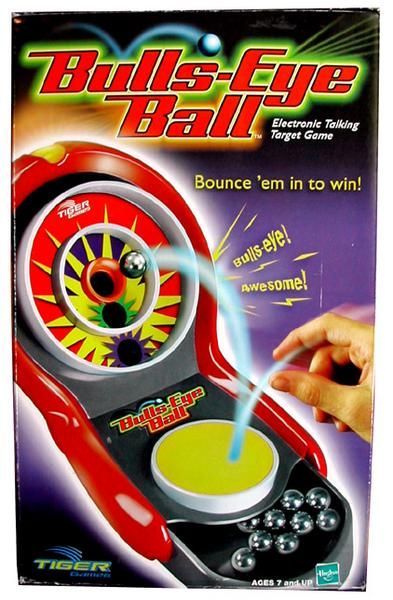Bulls-Eye Ball (2003) Board Game
Bulls-Eye Ball is an electronic action/dexterity game released in 2003 by Hasbro and Tiger Electronics. It is designed for one player and is suitable for ages 7 and up. The game involves using marbles to hit targets on a spinning wheel.
Game Components of Bulls-Eye Ball
How To Setup Bulls-Eye Ball
To set up the game, simply place the electronic talking target on a flat surface and ensure the metal balls are within reach. The game is ready to play once the target is powered on, with no complex assembly required.
Gameplay Mechanics and Game Objective
Player Experience
Bulls-Eye Ball offers an engaging and interactive way for kids to develop their hand-eye coordination and throwing skills. The electronic target provides auditory feedback, making the game more engaging and exciting. The game’s simplicity and immediate feedback make it accessible and enjoyable for children.
Pros
Cons
Personal Thoughts on Bulls-Eye Ball
Bulls-Eye Ball is ideal for families with children aged 8 and up who enjoy active play and competitive games. It is a great way to encourage physical activity and healthy competition among siblings or friends. However, the game’s simplicity may appeal more to younger children, and older kids might find it less challenging over time.
We are supported by our audience. When you purchase through links on our site, we may earn an affiliate commission, at no extra cost for you. Learn more.

